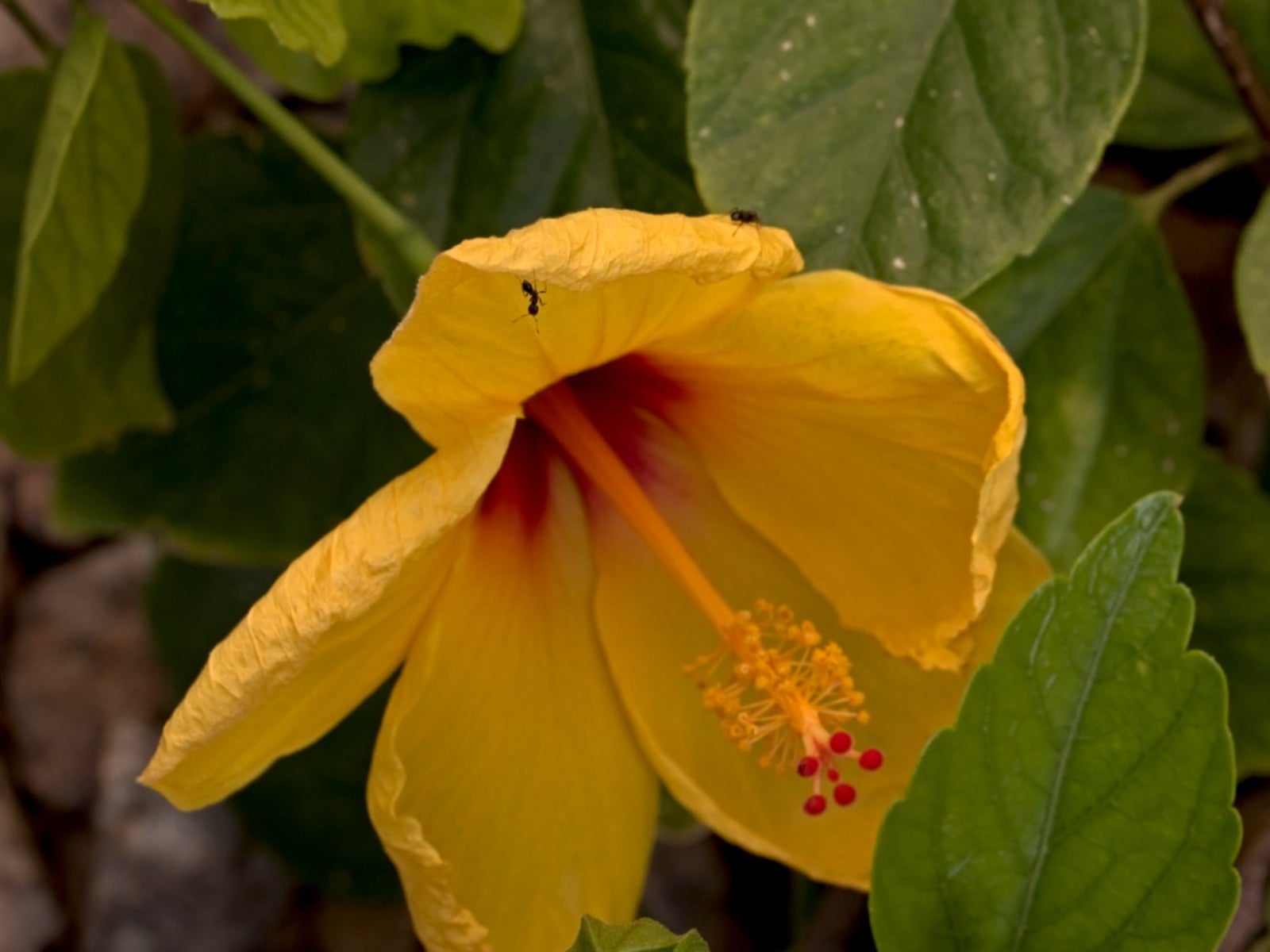Bugs On Hibiscus Plants: How to Treat A Tropical Hibiscus With Sticky Leaves


Hibiscus flowers bring a touch of the tropics to your home interior or exterior. Most varieties are warm season plants but there are some hardy perennial specimens suitable for USDA Plant Hardiness zones 7 or 8. The plants are easy to grow in slightly moist soil and full sun sites. While they have few problems with pests, sucking insects can cause distorted foliage and make hibiscus leaves all sticky. This is honeydew on tropical hibiscus or perennial plant leaves. It can cause sooty mold and problems for plant's photosynthetic process.
Hibiscus Leaves All Sticky
A tropical hibiscus with sticky leaves or your hardy perennial in the garden with sooty black moldy leaves, both have the same problem. The honeydew on tropical hibiscus and perennials causes a gummy coating, which can be host and fuel to fungal spores that cause the sooty mold fungus. So where does honeydew come from? It is the excretion of several sucking insect pests. The presences of ants on your plants will verify that hibiscus pests are present and the gum is not from another source. Ants use the honeydew as a food source. They will even herd some sucking insects to keep the source of fuel consistent.
Hibiscus Pests
Many types of insects create honeydew. Aphids, scale, and mites are the most common causes of the sticky stuff.
- Aphids are members of the spider family and have eight legs. They come in a wide variety of colors, some with striping or spots.
- Scale may be hard or soft bodied and cling to stems, twigs, and other plant parts, often blending in with the plant's flesh.
- Mites are nearly impossible to see but you can check for them easily. Place a piece of white paper under the plant and shake. If the paper is coated with dark specks, you probably have mites.
- A tropical hibiscus with sticky leaves is also likely to be a victim of pink hibiscus mealybug. They look much like any mealybug but are pink with a waxy coating. In Florida, they have become quite a nuisance and are very common bugs on hibiscus plants.
- Other hibiscus pests include the whitefly. These tiny whiteflies are unmistakable and are often found on indoor plants.
Damage from Honeydew on Tropical Hibiscus
The honeydew coats the leaves and prevents the plant from harvesting sun energy to maximum capacity. The sticky coating also inhibits respiration, which is a natural product of photosynthesis where plants release excess moisture. Completely coated leaves will die and drop off, which limits the solar surfaces the plant has to collect solar energy. Leaves also distort and become stunted. This results in a sickly plant that may fail to perform to its best potential.
Killing Bugs on Hibiscus Plants
In most cases, a horticultural soap or neem oil is effective in reducing the population of hibiscus pests. You can also rinse off the plant to get rid of soft-bodied insects, like the aphids. There are also several insecticides specifically formulated for the individual pest. Identify the pest correctly and only use formulas for that type of insect to avoid killing beneficial insects.
Sign up for the Gardening Know How newsletter today and receive a free copy of our e-book "How to Grow Delicious Tomatoes".

Bonnie Grant is a professional landscaper with a Certification in Urban Gardening. She has been gardening and writing for 15 years. A former professional chef, she has a passion for edible landscaping.